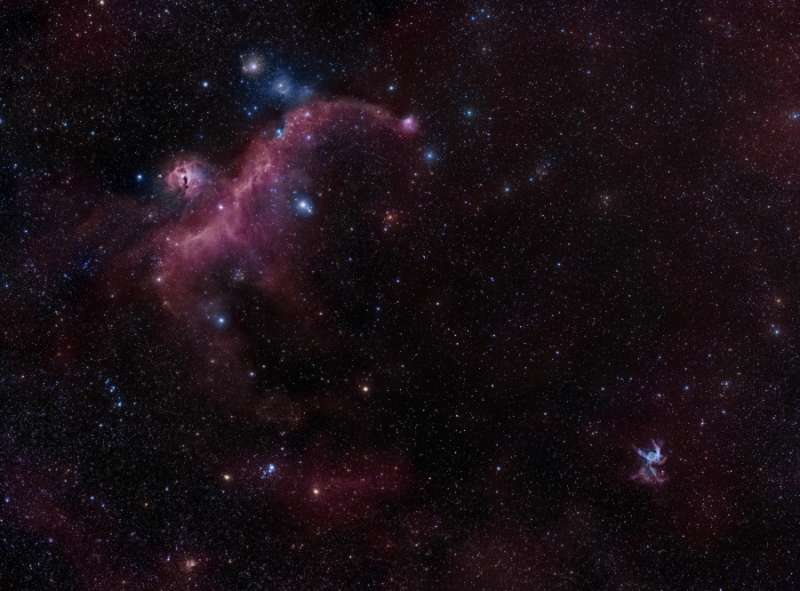Credit & Copyright: Rogelio Bernal Andreo
(Deep Sky Colors)
Explanation:
Seen as a seagull and a duck, these nebulae are
not the only
cosmic clouds to
evoke images of flight.
But both are winging their way across this broad
celestial landscape, spanning almost 7 degrees across
planet Earth's night sky
toward the constellation
Canis Major.
The expansive Seagull
(upper left) is itself composed
of two major cataloged
emission nebulae.
Brighter NGC 2327 forms the head with the more diffuse
IC 2177 as the wings and body.
Impressively, the Seagull's
wingspan would correspond to about 250 light-years at
an estimated distance of 3,800 light-years.
At the lower right, the Duck appears much more compact and
would span only about 50 light-years given its
15,000 light-year distance estimate.
Blown by energetic winds from an extremely massive,
hot star near its center, the Duck nebula is cataloged
as NGC 2359.
Of course, the Duck's thick body and winged appendages
also lend it a more dramatic popular moniker --
Thor's Helmet.
1999 2000 2001 2002 2003 2004 2005 2006 2007 2008 2009 2010 2011 2012 2013 2014 2015 2016 2017 2018 2019 2020 2021 2022 2023 2024 2025 |
Yanvar' Fevral' Mart Aprel' Mai Iyun' Iyul' Avgust Sentyabr' Oktyabr' Noyabr' Dekabr' |
NASA Web Site Statements, Warnings, and Disclaimers
NASA Official: Jay Norris. Specific rights apply.
A service of: LHEA at NASA / GSFC
& Michigan Tech. U.
|
Publikacii s klyuchevymi slovami:
emission nebula - emissionnaya tumannost' - zvezdnyi veter - zvezdy Vol'fa-Raie - tumannost' Utka
Publikacii so slovami: emission nebula - emissionnaya tumannost' - zvezdnyi veter - zvezdy Vol'fa-Raie - tumannost' Utka | |
Sm. takzhe:
Vse publikacii na tu zhe temu >> | |
